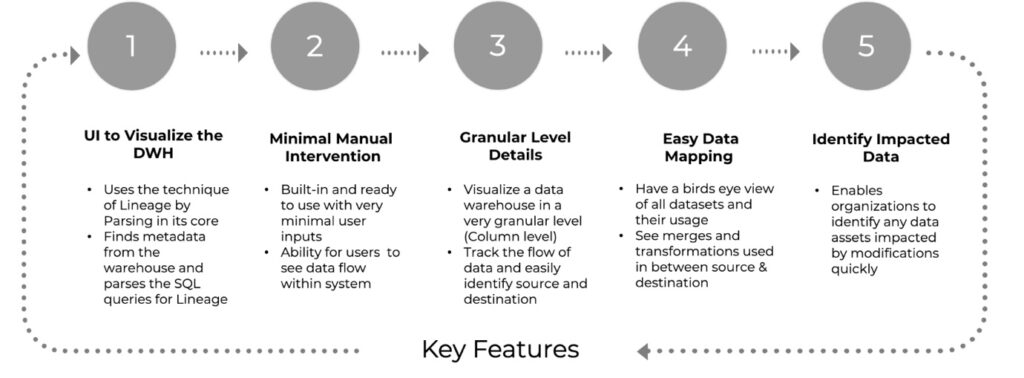LiMA
LiMA
Data Lineage Mapper

With the continually increasing flood of data that enterprises want to ingest , transform and monetize, it is imperative to be able to track the lineage of data from source to target and where it gets used.
LiMa, data lineage mapping engine, is a solution from Litmus7 that can be used to visualize the flow of data from source to target tables including the transformations as part of the data engineering pipeline. This robust data management solution helps with impact analysis and dependency analysis during schema evolution ,makes root cause analysis for incident triage easier and provides business users/data analyst with an easy solution to trace data attributes to source data attributes
LiMa helps to identify and map source and destination of the data. It can extracts the lineage details from a SQL DML and generate a lineage graph based on it. The extracted details include the database, schema, tables and columns of the source table as well as the target table. Using this information, the system gives users details of the source table from which data was taken and what transformations it underwent before reaching the destination table.
Functions
- • LiMa provides a clear picture of data flow at a very granular level
- • Makes data discovery and mapping relationships between data entities easier
- • Provides visibility into the impact of specific changes in data to any downstream applications
- • Enables the data sources and transformations to be visible to end users who work with it on a daily basis
Features

LiMa is able to provide a graphical representation of the flow of data within the warehouse. The solution also allows users to generate a data mapping sheet which is the tabular representation of data transfer between two tables. With LiMa, a business will be able to get a clear picture on which all tables will be impacted if a change is introduced in any single source or destination.
Advantages
- • Enables to have a clear view of all datasets and their usage in downstream systems
- • Empowers users to do impact analysis of data changes efficiently
- • Changes or expands their analytical programs more effectively
- • Saves on time & cost
